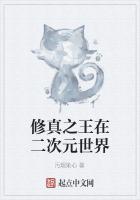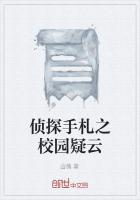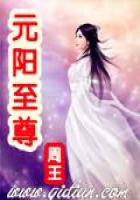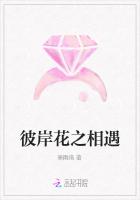Qigong is also called “Neigong” or “Lianqi” in the vocabulary of Chinese Wushu. The term “Qigong” first appeared at the end of the Qing Dynasty, and was called “Xingqi” or “Daoyin” in ancient times. Based on the meridian theory, it is a form of maintaining health using respiration regulation and “qi” circulation as the major method. Qigong is regarded as one of the most traditional Chinese regimens.
Zen Buddhism
Zen Buddhism, one of the 13 sects of the Chinese Buddhism, was said to star t from Bodhidharma, and prevailed from the sixth patriarch Hui Neng. After the mid and late Tang Dynasty, it became the mainstream of the Chinese Buddhism, and also one of the most impor tant symbols of the Chinese Buddhism.
Zen Buddhism does not require a special cultivation environment. It focuses on a cer tain luck to become eminent by chance and acquire the realm of clear mind. However, the realm of clear mind requires not “access to sacredness from commonness” but “access to commonness from sacredness.” Zen Buddhism upholds that cultivation does not require one to read scriptures, or become a monk or nun. One can live ordinary daily life as usual. The daily life of those who succeeded in Zen Buddhism cultivation has no difference from that of ordinary people, and the difference lies only in the state of mind. There is only a momentar y slip between ordinary people and Buddha. Zen Buddhism has created many new meditation methods such as roaming. All the methods can enable people to have the sensitivity to immediate enlightenment. The enlightenment is beyond all time and space, cause and effect, and past and future, and obtains a sense of freedom to be free from all things and all constraints, thereby over coming the material desire and attaining sainthood, and freeing from rigid adherence to the worldly things, but still living a normal daily life.
Traditional Chinese culture can be considered a combination of Confucianism, Buddhism and Taoism. As a minor branch of the traditional Chinese culture, Qigong also falls into three categories: the Confucian, Buddhist and Taoist styles. Among them, both the Confucian and Taoist styles took shape very early, while the Buddhist-style Qigong was introduced to China along with the Buddhism.
Confucian-style qigong is characterized by “seated meditation,” with “quiet sitting” as the main form. The Taoism qigong, guided by Zhou Yi (the Changes of the Zhou ) and the theory of Yin-Yang and Five Elements, boasts a long history, rich literature and the greatest influence. Given that Zhou Yi is the classic work of Confucianism, the Confucian and Taoist styles can be said to have essentially originated from the same source, affecting each other and penetrating one another. However, Confucian qigong is more influenced by the Taoist style in its evolving process while Taoist qigong incorporates the effort and offers the richest written works.
Buddhist qigong also includes many sub-branches, with the most influential ones being Jingtuzong, Chanzong, Tiantaizong and Mizong.
Chanzong (Zen Buddhism) has been the most popular one among all the Chinese Buddhist braches since the Tang Dynasty and is followed by Jingtuzong. Chanzong and Jingtuzong merged into one called the “combined practice of Chanzong and Jingtuzong” after the Song Dynasty. Meanwhile, Jingtuzong advocates pursuing the western pure land of happiness, gaining popularity among ordinary people; Chanzong highlights the power of understanding and thus influences the intellectuals most. Chanzong qigong takes “Chanding” and comprehension as its major forms and “zuogong” (also called “zuochan”) is the most common practice. From Tiantai Mountain located in Zhejiang, Tiantaizong advocates Zhiguan Famen, which is used to guide qigong practice. “Quiet sitting” is its major form, which focuses on the sense of qi, accompanied by self-developed gong.
Mizong, also called Tantra Yoga, was introduced to China from India as early as the Three Kingdoms Period, and spread in to Chang’an (currently Xi’an) and Luoyang areas in the Tang Dynasty, and later exported to Japan where it was developed into the Japanese Zhenyanzong style. It almost disappeared following the “Huichang Suppression of Buddhism” in the late Tang Dynasty and the turbulent Five Dynasties Period, but was carried forward in Tibet and evolved into several branches. Mizong is closely associated to the ancient Indian Yoga, its spread, however, is only limited to the Tibet area, but people on the inner land did not learn it until the 1930s and 40s.
In a zigzag-spreading process, Confucian, Buddhist and Taoist styles have all been integrated with each other over a long period of time, affecting and complementing each other.
Qigong is regarded as a science, but historical reasons inevitably bring a touch of religious and sorcery elements into it. Regimen and qigong have intricate and undeniable links in China, and Neigong in Wushu is connected to Qigong, too. Qigong must be mentioned here as the issue of Wushu and regimen is being addressed.
The origin and development of Qigong had a closed relationship with self-aggrandizement.
Since early times, human beings dreamt about a kind of supernatural ability overwhelming all restriction. That was because, in reality, they had been dominated by the laws of nature and had been tortured frequently by nature. Therefore, they relied on this kind of delusion to deal with the weakness and passiveness. Thinking about the myths, they were thought to be the way the early people challenged nature and the cosmos in the delusion.
Later, with the development of society, human beings became more mature,so their delusions began to diminish. However, the self-aggrandizement of human did not disappear, but deposited deep in the soul, turning into a kind of unconsciousness to be passed down from generation to generation.















